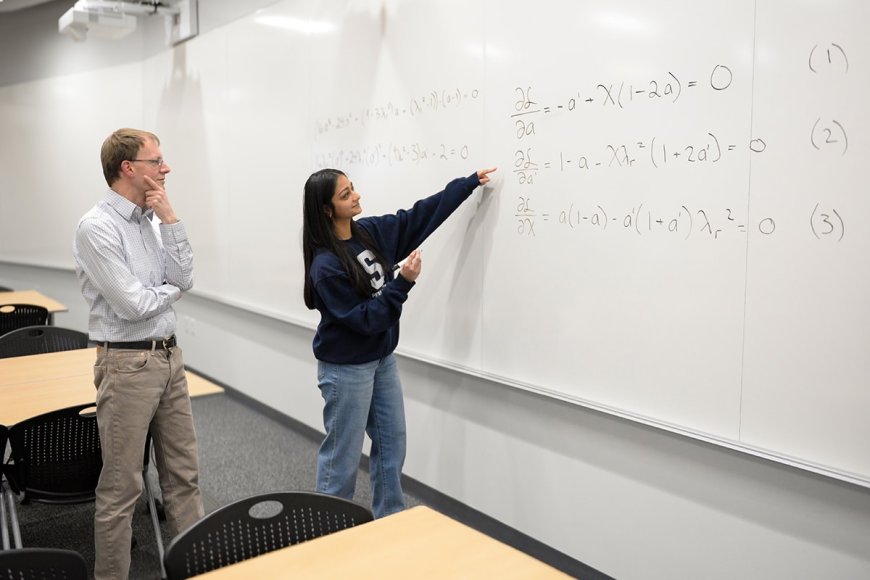Grad Student Updates Century-Old Math Equation to Improve Wind Turbine Efficiency
Divya Tyagi, a graduate student at Pennsylvania State University (Penn State), has revised a 100-year-old math equation to improve modeling for wind turbine efficiency. Tyagi used a century-old equation originally developed by aerodynamicist Hermann Glauert. Glauert created the equation to find the maximum power coefficient to determine optimum rotating actuator disk performance, and this initial […] The post Grad Student Updates Century-Old Math Equation to Improve Wind Turbine Efficiency appeared first on EcoWatch.

Divya Tyagi, a graduate student at Pennsylvania State University (Penn State), has revised a 100-year-old math equation to improve modeling for wind turbine efficiency.
Tyagi used a century-old equation originally developed by aerodynamicist Hermann Glauert. Glauert created the equation to find the maximum power coefficient to determine optimum rotating actuator disk performance, and this initial formula lead to significant strides in wind energy development, as R&D World reported.
However, it had gaps that did not fully address all factors that influence wind turbine efficiency. While studying Glauert’s equation, Tyagi was able to refine it into an easier to use formula that better applied to wind turbine efficiency. Her work was recently published in the journal Wind Energy Science.
“I created an addendum to Glauert’s problem which determines the optimal aerodynamic performance of a wind turbine by solving for the ideal flow conditions for a turbine in order to maximize its power output,” Tyagi said in a statement.
According to the study, Tyagi refined the formula by considering more forces that affect efficiency, such as downwind thrust and bending moments, as coefficients.
“If you have your arms spread out and someone presses on your palm, you have to resist that movement,” said Sven Schmitz, co-author of the paper, Tyagi’s advisor and a faculty member at Penn State’s Institute of Energy and the Environment. “We call that the downwind thrust force and the root bending moment, and wind turbines must withstand that, too. You need to understand how large the total load is, which Glauert did not do.”
By considering these additional coefficients, the revised formula can provide better insights into all factors that act on the turbine rotor.
“Improving the power coefficient of a large wind turbine by just 1% has significant impacts on the energy production of a turbine, and that translates towards the other coefficients that we derived relations for,” Tyagi explained. “A 1% improvement in power coefficient could notably increase a turbine’s energy output, potentially powering an entire neighborhood.”
Because Tyagi’s research provided a simple revision to the original formula, engineers will be able to easily apply the equation in the field to further improve upon wind turbine efficiency. Ultimately, the updated equation could lead to higher wind production with lower costs.
“The real impact will be on the next generation of wind turbines using the new knowledge that has been unveiled,” Schmitz said. “As for Divya’s elegant solution, I think it will find its way into the classrooms, across the country and around the world.”
The post Grad Student Updates Century-Old Math Equation to Improve Wind Turbine Efficiency appeared first on EcoWatch.





















































